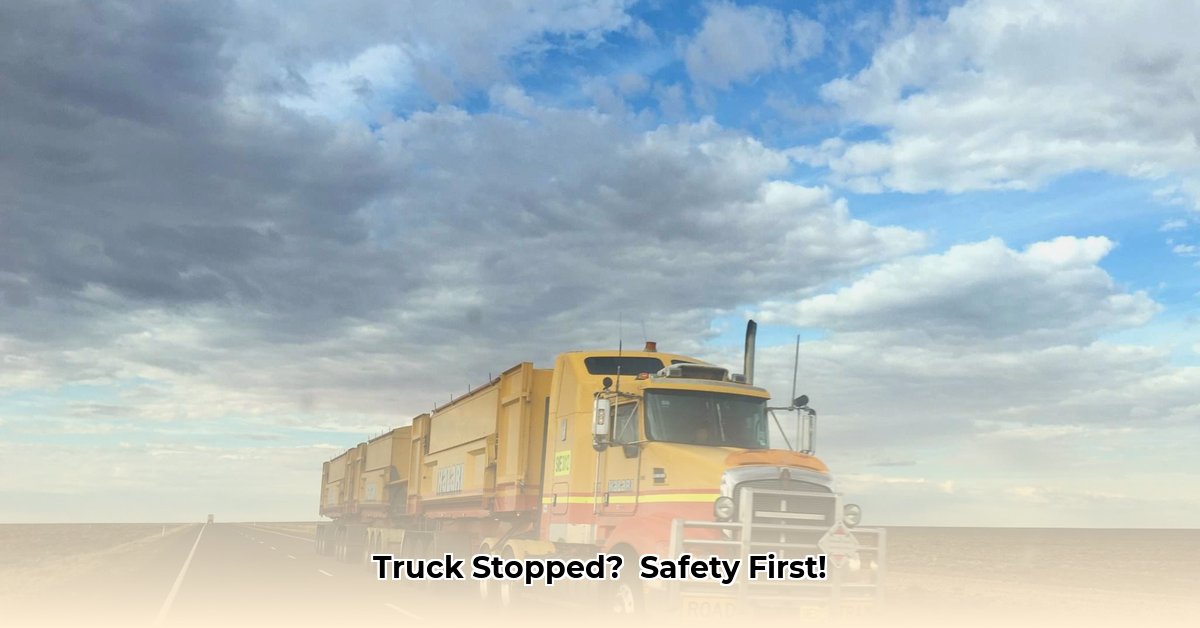
After a long day on the road, securing your rig safely is paramount. This guide provides a step-by-step process to ensure your safety and the safety of others. It covers finding a safe parking spot, shutting down your vehicle, performing a post-trip inspection, and addressing potential problems. For additional driving skills, check out this guide on double clutching.
Finding a Safe Parking Spot
Choosing your parking spot is crucial. Avoid poorly lit, insecure areas. Prioritize these factors:
- Visibility: Ensure other drivers can easily see you. Poor visibility increases accident risk.
- Level Ground: Park on level, firm ground to prevent shifting. Uneven ground can destabilize your rig.
- Space: Ensure sufficient space for safe parking and maneuvering. Crowded lots increase the risk of collisions.
- Weather: Consider weather conditions; wind, rain, or snow can impact your parked vehicle.
- Security: Opt for areas with security measures (lighting, cameras, security personnel) to deter theft or vandalism. Your truck is a valuable asset.
Before shutting down, assess your surroundings. Is the area safe and free of obstacles? Trust your instincts – if something feels unsafe, keep searching for a better spot.
Shutting Down Your Rig: A Step-by-Step Process
This is a methodical process; follow these steps carefully:
Engage the Parking Brake: Always engage your parking brake before any other step. Never rely solely on trailer brakes. (98% of accidents involving parked trucks are caused by failure to properly engage the parking brake).
Lower the Landing Gear: Carefully lower your landing gear to distribute weight evenly, preventing shifting or tilting. Ensure the gear is securely locked.
Turn Off the Engine: Allow the engine to cool down gradually; avoid abrupt shutdowns.
Check Your Lights: Verify all lights (headlights, taillights, brake lights, turn signals) are functioning correctly for optimal visibility.
Secure Your Cargo: Inspect your cargo; secure any loose items to prevent shifting or damage during parking.
Disconnect Air Lines (If Applicable): If necessary, disconnect air lines to prevent accidental air pressure release.
Post-Trip Inspection: A Detailed Checklist
This is more than a quick glance; it's a thorough check-up. It helps identify potential problems before they escalate.
Tires: Inspect each tire for cuts, bulges, unusual wear, and proper inflation. Low pressure or damage can cause blowouts.
Brakes: Examine brake pads and lines for leaks or damage. Faulty brakes are a serious hazard.
Lights: Re-check all lights to ensure they remain functional.
Mirrors: Check mirrors for cracks or damage affecting visibility.
Fluid Levels: Check engine oil, coolant, transmission fluid, and other critical fluids, noting any leaks or low levels.
Leaks: Check for fuel, hydraulic fluid, or other leaks; log your findings.
General Condition: Inspect the entire truck for damage, loose parts, or anything unusual.
Maintain a detailed log of your findings. This record is crucial for maintenance and safety reporting; meticulous documentation protects you and your employer. "Thorough documentation is key to preventing future issues," says Dr. Sarah Chen, PhD, Transportation Safety Expert at the National Transportation Safety Institute.
Addressing Problems: Proactive Measures
Identifying and addressing problems promptly is critical. Ignoring minor issues can lead to major problems.
- Have a clear plan for communication (dispatcher, fleet manager, mechanic).
- Don't delay; address potential issues immediately.
Dealing with Trailer Drift
Trailer drift, even slight, can indicate mechanical problems. If your trailer isn't sitting squarely, carefully reposition it. If the problem persists, seek professional assistance immediately. Do not take chances.
Remember, your responsibilities extend beyond driving. Safe parking and thorough inspections are crucial for your safety, the safety of others, and protecting your cargo and equipment. Consistent diligence is your best defense.
Correcting Significant Tractor-Trailer Drift
Understanding how to correct significant drift is essential for safe operation.
Understanding the Causes of Drift
Several factors contribute to drift: uneven road surfaces, low tire pressure, shifting cargo, and driver technique. Early recognition and swift but smooth reactions are key.
Correcting Drift During Backing
Assess the Situation: Determine the direction and severity of the drift.
Gentle Steering Adjustments: Use small, controlled steering inputs. Avoid jerky movements.
Adjust Your Speed: Slower speeds allow for greater precision. Stop immediately if the drift worsens.
Re-evaluate and Re-adjust: Pause after each correction to assess; make further adjustments if needed.
Spotter Assistance: A spotter can greatly improve safety and precision, especially in tight spaces.
Correcting Drift While Driving
Ease Off the Accelerator: Gradually reduce speed; avoid sudden braking.
Gentle Counter-Steering: Make slight steering corrections to counter the drift.
Check Tires and Load: Review tire pressures and cargo security after addressing the drift.
Preventing Drift
Prevention is superior to correction:
Regular Tire Maintenance: Proper inflation is crucial. Regularly check tire pressure and wear.
Load Distribution: Secure and evenly distribute cargo. Improper weight distribution is a major cause of drift.
Regular Inspections: Conduct thorough pre-trip inspections to identify potential issues.
Mastering drift correction requires practice and awareness. Remember, safety is always the top priority. Smooth, controlled movements are key to safe operation.